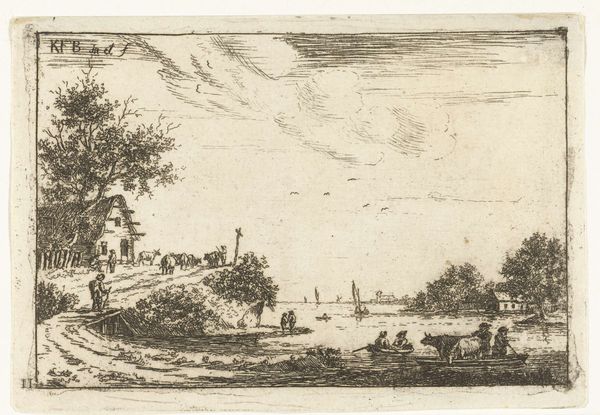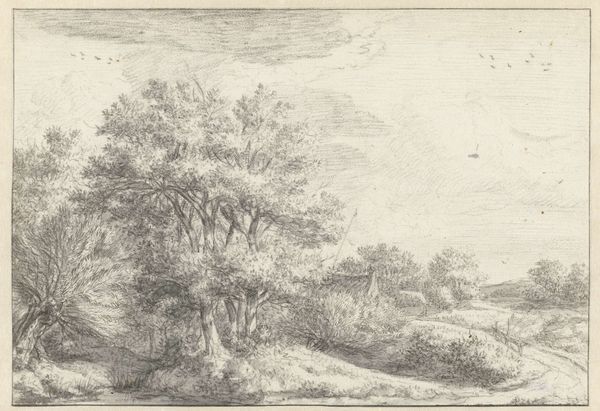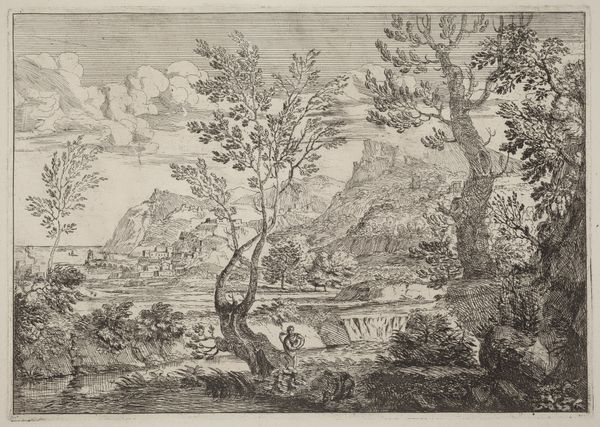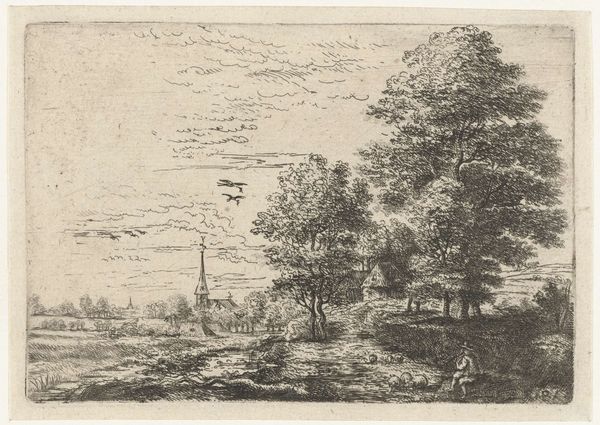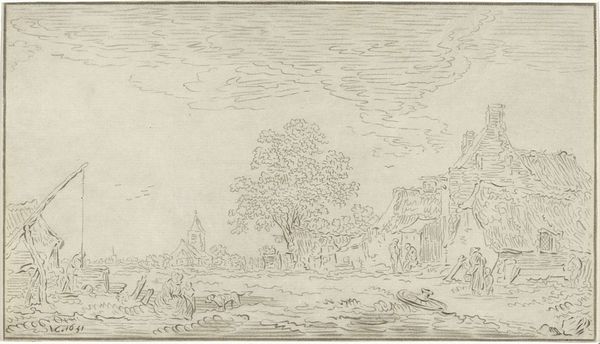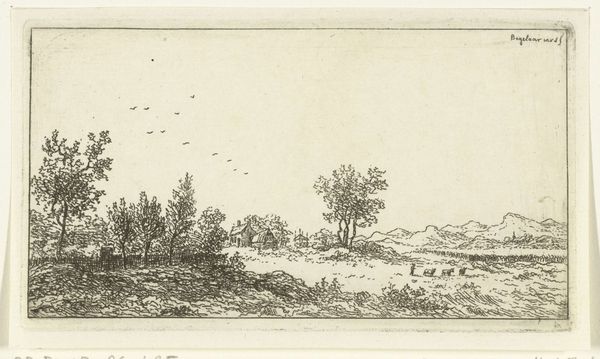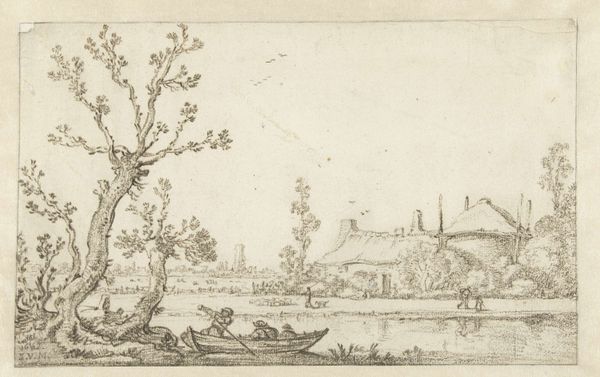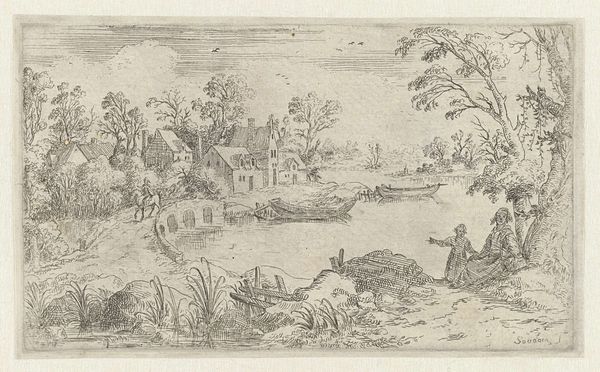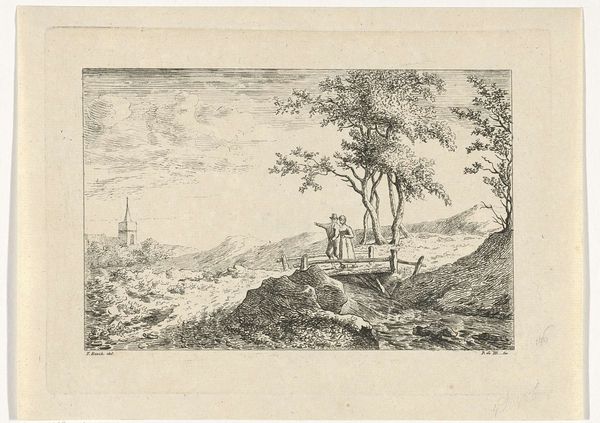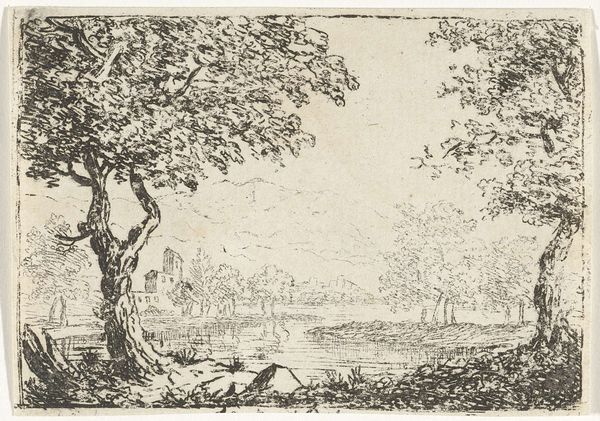
Dimensions: height 94 mm, width 137 mm
Copyright: Rijks Museum: Open Domain
Editor: This is "Heuvellandschap met kasteel aan rivier," or "Hill Landscape with Castle by a River," an engraving by Carel Frederik Bendorp from 1769. The fine lines give the scene a delicate, almost wistful feeling. What does this landscape evoke for you? Curator: This engraving is a fantastic example of how landscape art was used to express social and political ideas in the late 18th century. The presence of the castle suggests aristocratic power, but notice how it's softened by the pastoral setting. It’s not dominating the scene, but rather integrated into it. Editor: I see what you mean. The people in the foreground seem to be enjoying nature almost in harmony with the castle's presence, it is a peaceful landscape. Curator: Exactly! Consider that this was created during a period of social upheaval. How might this idyllic scene function as a commentary or perhaps even a form of wishful thinking? Could it represent a desire for a more balanced social order, one where the aristocracy and common people coexist peacefully within the natural landscape? Editor: So the landscape isn't just a pretty picture; it's a political statement? Curator: Precisely! Think about the role of patrons and the art market. Who was buying these landscapes, and what message did they want to project? Were they part of the elite reinforcing their legitimacy through an image of bucolic harmony, or was there perhaps a subtly subversive element at play? Editor: That gives me a whole new perspective. I hadn’t considered the social context at all! Curator: It’s always worth remembering that art exists within, and often actively shapes, the social and political landscape of its time. Editor: Definitely food for thought. Thanks!
Comments
No comments
Be the first to comment and join the conversation on the ultimate creative platform.
